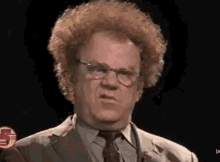Assessment Frameworks
May 09, 2022
Every good program starts with an assessment… At least that’s my belief. If we want to know how to get where we are going, we should at least know where we are currently at. This early structure to your process allows you to create a roadmap to the goal. We can then turn a journey that seems a long distance away into bite sized chunks.
So first off, what is an assessment?

In this instance, an assessment provides an opportunity for measurement in what’s known as a “test-retest model”. Essentially, this means we are going to compare and contrast results along the journey to measure progress and make any changes along the way.
I’m a believer that everything we do, assesses something. This can either be an intentional or unintentional process. Even when we aren’t in a formal assessment period, we are taking results and feedback from our clients which turn into info. We take that info and make decisions, thus an assessment.
If you’re reading this and are unsure where to start with your assessment, don’t worry, I’ve got you covered.
Here is how I break down my assessment framework:
Subjective History - This is the portion of your assessment where you are gathering the story of your client! How did they end up here? What are their goals? What is their training volume/history? What do they eat? How much do they sleep?
The goal of a subjective history for me is to understand the context of their environment!
Objective Measures - What can we put a number or range on?
- Movement screen or ranges of motion
- Strength screen - Think of screening for asymmetries or comparing lifts
- Neuro screen - More in the rehab realm, but coaches may screen this to potentially refer out to a licensed medical provider.
- Special testing - Orthopedic special tests, maybe some of your own assessment tools!
Technical Assessment - How does my client move? What shapes or patterns are they in?
- What patterns am I concerned with?
- Do they squat their deadlift? Do they hinge their squat?
- Do technical changes result in symptom change?
Interpretation - Using the Client Attribute Profile as an explanation framework (check it out here: https://www.instagram.com/p/CXJ3iBzP55a/ ), how does everything tie in and start to paint the picture?
Plan - Where are we looking to go and how do we get there?
- What are the stops along the way?
- What are the phases you need to take your clients through? (Calming irritation, reintroduction of movements, ranges of motion, Return to sport as some examples)
And just like that, you have the pieces right in front of you! Now you just have to navigate the uncertainty of the real world!
One thing I want you to know is you should ALWAYS be assessing, likely the more informal kind! Each interaction is a new piece of information to help solve the puzzle! The information gathered at the first meeting with a client is simply the starting point. It tells you the minimum amount of info you need to get it going.
Lastly, understand your assessment timeframe. The initial assessment is just a starting point! Keep expanding your time horizon so you can keep gathering assessment data to help make your next critical decision!
What questions does that leave you with your assessment and how can I help?
Interested in learning more?

